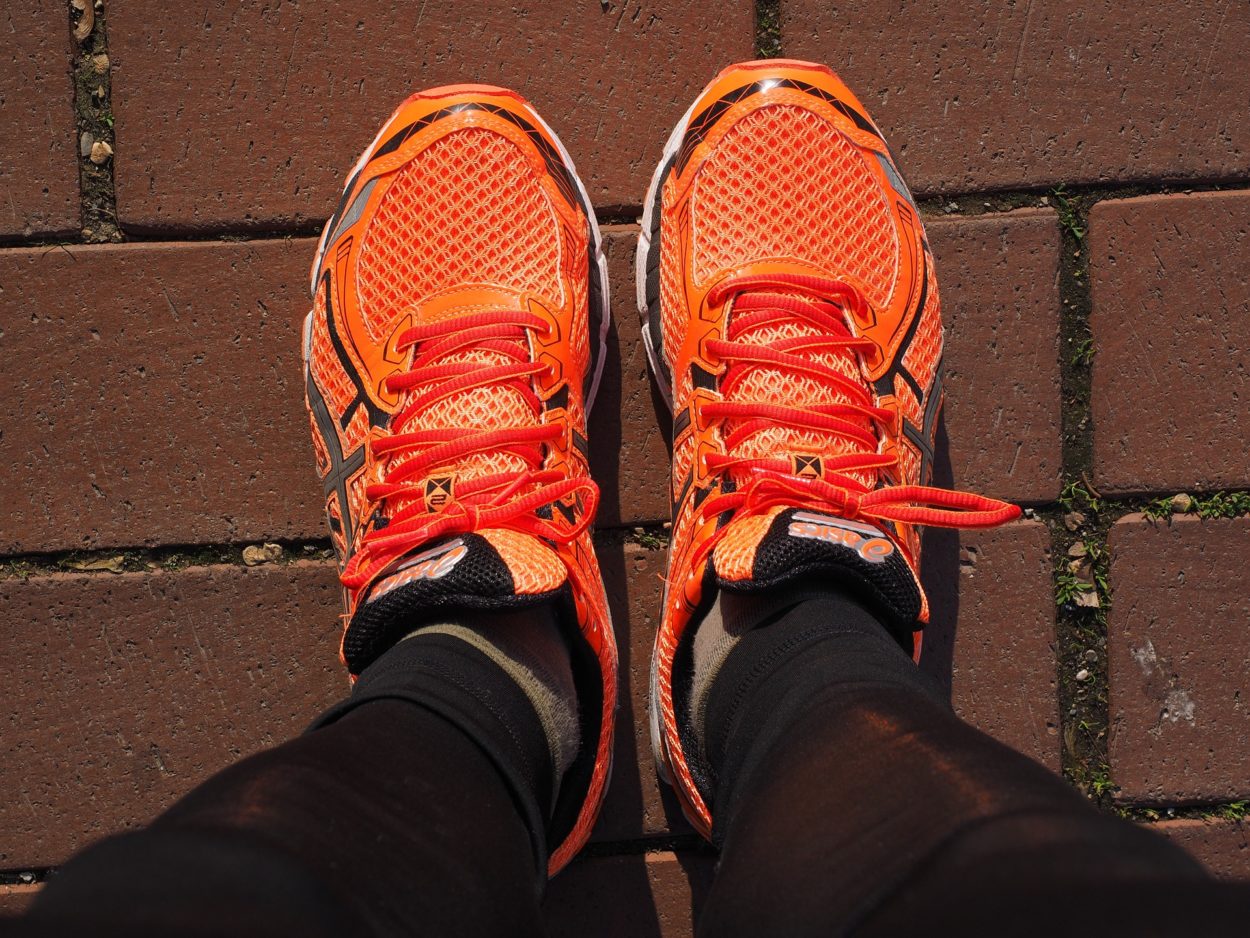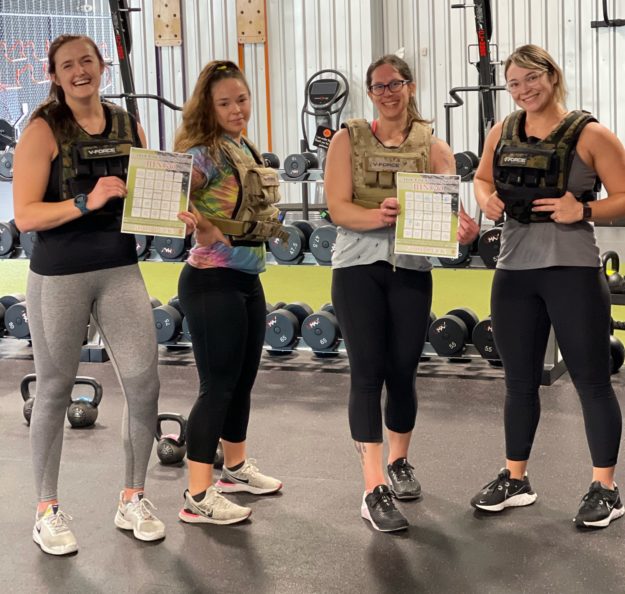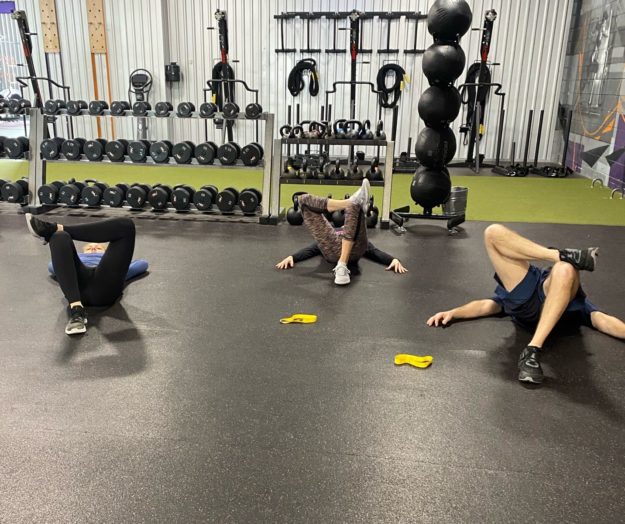SEARCH BLOG POSTS

10 Best Gym Shoes for Every Type of Workout
We cannot stress enough the importance of appropriate footwear. Wearing the wrong shoes can do serious damage to your entire body, both in everyday life as well as during exercise and intense physical activity. Yet, it happens all the time — people squeeze themselves into ill-fitting shoes in the name of fashion, or they simply wear the wrong type of shoe for the activity they’re performing. After all, a pair of specialized jazz sneakers are perfect for your intense dance class, but will destroy your arches on a running track. Your brand new Chuck Taylors might look sick with a pair of jeans or on the basketball court, but you’d regret wearing them on a hiking trail.
Whether you’re a total sneakerhead or just need to know the basics in order to protect your body (and optimize your workout), we’re here for you. Check out our guide to putting your best foot forward when it comes to fitness.
- The Activity: Lifting
The Shoes: Low Drop Sneakers
Do you even lift, bro? Then you better be laced into the right pair of sneaks.
Any seasoned lifter knows how important it is to stay anchored and stable while working with weights. What they might not know is that the shoes that they wear will affect how much that happens. Yes, lifters, shoes matter. A lot.
For your next lifting session, choose a sneaker that keep your feet low to the ground, not one with excessive cushioning. It helps to give you a more stable and secure base and lets your muscles work more effectively. These shoes are sometimes referred to as minimalist sneakers or trainers.
- The Activity: Cycling
The Shoes: Stiff-Soled Shoes
Don’t get soft on us, at least not when there’s a bike involved. This is probably something you can deduce from childhood memories — riding a bike barefoot or in flip flops tends to go badly. It slowed you down and made your adventures more tiring and less efficient. Bring that logic to your modern cycling routine, whether it’s your daily commute or your favorite spin class. When you ride a bike, stationary or mobile, it’s important to wear shoes that fit snugly (but not uncomfortably tight) and have a nice, stiff sole. It will help direct your physical energy to the right place — the pedal — allowing you to move faster without exerting extra energy.
- The Activity: Crossfit (and Similar Programs)
The Shoes: Lightweight Low Drops
Avoid any type of running shoe here — like with lifting, Crossfit and the programs inspired by it require a shoe that keeps you close to the ground and helps with strengthening your feet. Arch support is important in these sneakers, as is avoiding anything too clunky, which could slow you down and get in the way.

- The Activity: Treadmills and Other Running Equipment
The Shoes: Lightweight, Uncushioned Sneakers
Running on a treadmill or other similar piece of equipment is not the same as jogging on city streets. The track of a treadmill has much more cushioning in its construction than the pavement, tracks, or trails that you’re used to running on — and it’s helpful to wear a specific pair of shoes to offset this. That’s why our team wears lightweight and flexible sneakers on the treadmill, and avoids designs that have extra cushioning in them. After all, it’s important to actually feel your feet hitting the treadmill when you run, not a slight sensation swaddled into layers of cushioning. It’s more stabilizing that way, and can help you to avoid the risk of injuring yourself.
- The Activity: Hiking
The Shoes: Hiking Boots…or Trail Running Shoes
Sure, hiking boots were designed for the specific purpose of trekking up mountains, through heavily wooded areas, and having adventures safely. For sneaker lovers, however, there’s another option: trail running shoes. Though they were designed for running and jogging in more rugged landscapes, they are often utilized by day hikers, as they are more lightweight than a traditional boot. They’re much safer than wearing regular sneakers on a hike, which plenty of people do and come to regret after they’ve slipped on a wet rock or unexpected knobbly root.
- The Activity: Rock Climbing
The Shoes: Climbing-Specific Shoes
This is not the activity to be messing around with the wrong footwear. Rock climbing in the wrong shoes isn’t just uncomfortable or ineffective, it’s dangerous. Whether you’re scaling an outdoor monolith or a man-made climbing wall, the rules are the same: you need the right shoes to do this safely and correctly.
Be sure to shop for a shoe that was designed with rock climbing in mind — they tend to be cambered to some level, have lots of extra grip, and feature specially-designed soles that allow you to feel the intricacies of whatever is underneath your foot, so you know where to step.
If you become super serious about climbing, you might even want to invest in a few different pairs of climbing shoes, as there are various types designed for different activities. For instance, performance climbers might go for a less comfortable but more effective shoe with a down-turned toe, while a novice hiker likely doesn’t need something with much arch at all.
- The Activity: Outdoor Running and Jogging
The Shoes: Running Shoes, Of Course!
Running shoes are ubiquitous in the activewear world, but it’s important to know the difference between them and regular old sneakers. To sort out which running shoe you need, there’s a few things that you’ll need to determine:
- Where you will mostly be wearing them?
Do you tend to jog on pavement? Wooded trails? The type of shoes that you wear will depend on this. For nature lovers, trail-specific running shoes, which we outlined in our hiking section, are your best bet — they’ve been designed to do exactly what you need safely.
For those who jog on streets or run on sidewalks, you’re going to want to go for a pair of road-specific sneakers. Road running shoes are more lightweight than their trail-specific counterparts, and don’t always have lots of bells and whistles — it just looks like a regular old sneaker.
- How do you walk?
The type of outdoor running shoe that you choose should be determined by how you walk or run. If you are are an overpronator, you’ll need a different style of running sneaker than if you are susceptible to supination. Many shoe stores, especially those with athletics as a speciality, will be able to help you out here. Some stores have a walking simulator that enables your shoe salesperson to determine your unique walking pattern. From there, they’ll know which running sneakers are the right fit for your specific gait.
- The Activity: Tennis
The Shoes: Tennis Shoes
Tennis shoes are often worn off the courts and as a fashion statement, but their original purpose remains as true as ever. If you’re actually going to play tennis, you should absolutely wear the shoes which were designed for that purpose.
Tennis doesn’t involve long distance running or heavy lifting — instead, your body needs to be agile, quick, and controlled, as it requires a near-constant stream of sudden movements and stops, as well as rapid sprints. For this, you need a very sturdy shoe that allows for these unique movements.
Tennis shoes are flatter than many other athletic sneakers, and often feature a special sole pattern designed to work with court material — and these can change, depending on where you play. If your tennis court is concrete, you should look for a pair of durable tennis shoes that are built with a hearty sole — leather or vinyl is a great choice. If you play in a clay court, there are tennis shoes designed with a sole that’s gentle on the materials. And finally, there are great all-rounder tennis shoes for when you play in multiple settings.
- The Activity: Soccer
The Shoes: Cleats or Turf Shoes
Got FIFA fever? If soccer is your sport of choice, you’re going to need something other than a standard pair of sneakers to properly play the game. Whether you plan to play with your kids after school or join a team of your own, your soccer game won’t be complete until you’re wearing the appropriate kicks — and a pair of shin guards!
Here’s a primer on the two main forms of soccer footwear — really, it all comes down to the texture of your playing field.
- Cleats
This tends to be the more commonly worn option for soccer shoes. They feature large studs on the soles of the shoe, allowing soccer players to get a better grip on wet, muddy, and/or slippery grass and surfaces when they run.
- Turf Shoes
The less common soccer shoe is generally worn on artificial grass or in drier conditions. Instead of large, protruding studs (like on cleats,) turf shoes feature bumpy-textured sole, which is stabilizing for the player and offers additional traction without slowing anybody down.
- The Activity: All Around, Everyday Gym Use

The Shoes: A Pair of Classic All-Purpose Sneakers
Maybe your workout style doesn’t involve just one type of sport or activity. If you’re the type who likes to hit the gym and try a little bit of everything. All the power to you! You probably learn a new skill every day, but do you want to change your shoes that often? Definitely NOT. That’s why we recommend grabbing yourself a good all-rounder to wear when you head to the gym.
Generally, these are lightweight sneakers that have a cushioned midsole and heel, ensuring that your feet will be comfortable and ready for impact. We prefer our all-rounders to have a fair amount of ankle support as well, just for safety’s sake. Once you’ve chosen a style that works for you, you can explore every corner of your fitness center without needing to lug additional sneakers in your gym bag.
Don’t see the sport you were thinking of? Have a specific question about a sneaker you purchased? Chances are, there’s someone on our team who knows the answer. Our passionate crew of trainers, nutrition coaches, and fitness gurus are some of the most knowledgeable people we know — and they love to help our partners make the most of their workout. Drop us a line, and we can invite you to our Boise facility, where you can tour our gym, peek into our classes, undergo a free fitness consultation, and of course, talk to our trainers about their experience and knowledge.
At Jack City Fitness, we scrapped the idea of memberships and instead offer athletes the unique opportunity to become one of our partners. As a partner, you’re a part of our team, not just somebody buying a service. Being a Jack City partner means there’s always someone who’s got your back, is ready to help you reach your highest potential, and will lift you up when you’re discouraged.
Once you partner up with us, you have full, 24-7 access to our fitness center, a host of classes to choose from, and options for custom, one-on-one, and even team training. We’re here to help you succeed. Find out more today!
